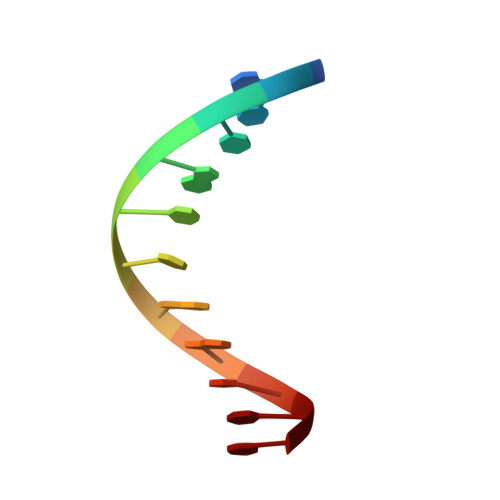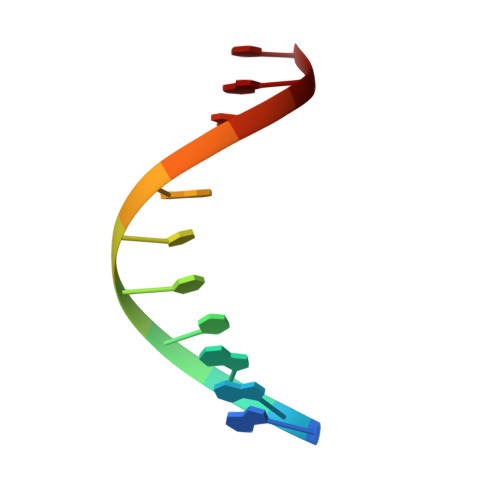Solution structure as a function of pH of two central mismatches, C . T and C . C, in the 29 to 39 K-ras gene sequence, by nuclear magnetic resonance and molecular dynamics.
Boulard, Y., Cognet, J.A., Fazakerley, G.V.(1997) J Mol Biol 268: 331-347
- PubMed: 9159474
- DOI: https://doi.org/10.1006/jmbi.1997.0975
- Primary Citation of Related Structures:
1FKY, 1FKZ - PubMed Abstract:
The DNA duplexes 5' d(GCCACCAGCTC) x d(GAGCTXGTGGC), where the base X is either cytosine or thymine, have been studied by one and two-dimensional nuclear magnetic resonance, energy minimization and molecular dynamics. The sequence studied corresponds to the region 29 to 39 of the K-ras gene and is a hot spot for mutations. The results show that both duplexes adopt a globally B-DNA-type structure. For the C x C mismatch, we observe a structural change as a function of pH with an apparent pK of 6.95. The neutral species has only one hydrogen bond between the two bases but shows two families of wobble structures where one base or the other is displaced in the major groove. The protonated species has two hydrogen bonds and two structures but of unequal populations. In both systems, the sugar puckers remain predominantly C2'-endo and no significant changes in the backbone structure are observed. The neutral C . T mismatch is stabilized by two hydrogen bonds but, surprisingly, it can also be protonated, although the apparent pK is much lower, 5.65. In this case, protonation does not result in an additional hydrogen bond but must be due to better base-stacking interactions for C+ x T. The NMR data show that the environment of the T imino proton is very similar for C x T and C+ x T, although the hydrogen bond acceptor would be expected to be a nitrogen atom in the former case and an oxygen atom in the latter. We propose that for both structures there is an intervening water molecule which in addition reduces backbone strain. We have also measured the fluctuations during molecular dynamics runs in these mismatches. All are greater than for Watson-Crick base-pairs and the C x C mismatch shows very pronounced mobility.
Organizational Affiliation:
CEA, Département de Biologie Cellulaire et Moléculaire, Centre d'Etudes de Saclay, Gif-sur-Yvette, France.














